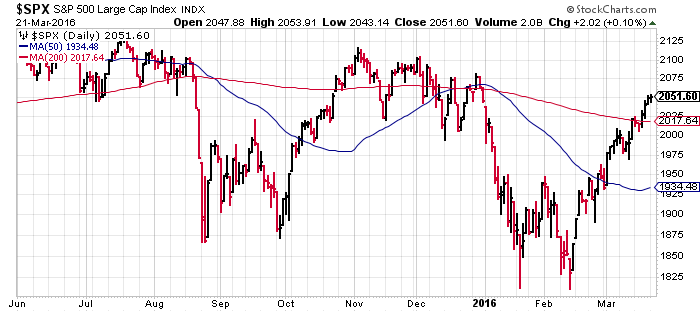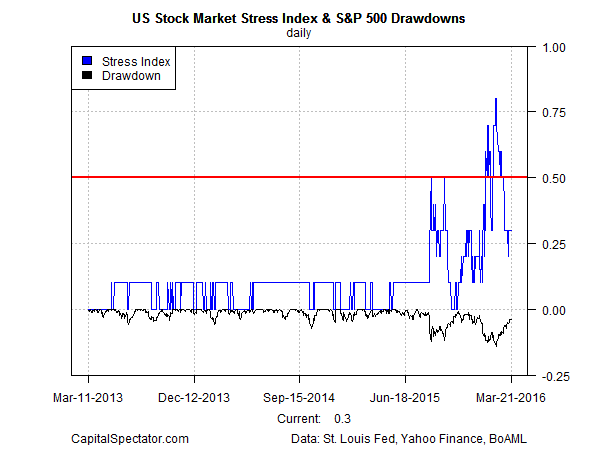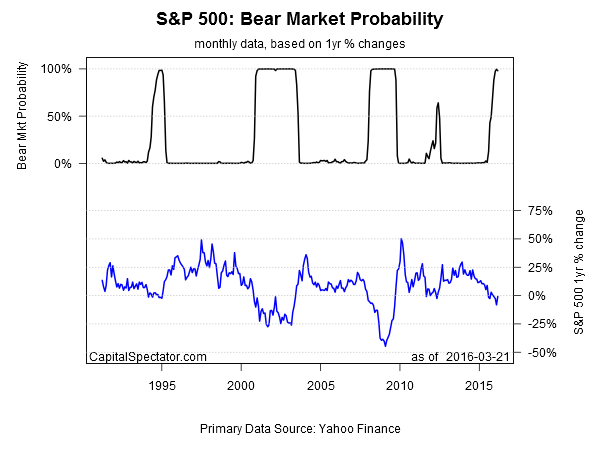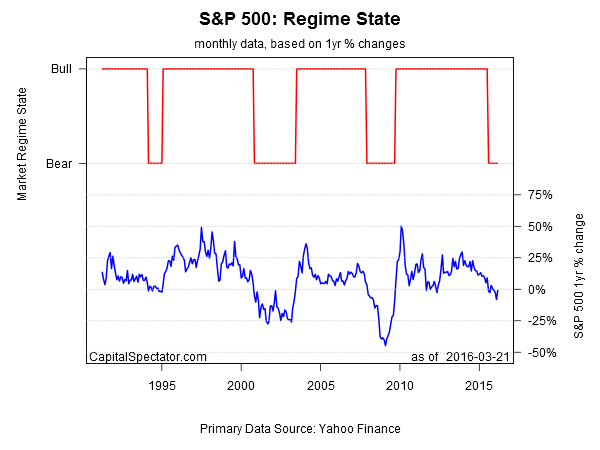The S&P 500 has been rallying in recent weeks, recovering all of the ground it lost in January and February. The sharp rebound has been impressive, inspiring optimists to claim that the old bull market has been revived and upside momentum is once again in the driver’s seat. Perhaps, but the true test awaits. Hanging in the balance is the question of whether the latest pop is a dead-cat bounce in a bear market or a genuine revival that makes fools of tactical asset allocators who turned cautious in recent months.
As usual with real-time analysis of market activity, there’s a conflicting set of numbers to consider, leaving a gray area for deciding which set of indicators are legitimate… or not. All is obvious in retrospect, of course, but the clarity of the past gives way to the murkiness of the present as we struggle to interpret previous patterns for current conditions. That said, the current state of market affairs looks unusually precarious. It appears that we’re at the put-up-or-shut-up moment that could be decisive for the medium-term future. But, hey, no pressure.
Let’s start with the positive. As the chart below shows, there’s a strong tailwind blowing for US equities in recent weeks. The S&P 500 has inched into positive territory on a year-to-date basis for the first time this year. But there’s a long way to go before the 50-day moving average recovers lost ground relative to the 200-day average. Yes, those are arbitrary numbers for defining momentum—the same applies for all moving averages, for that matter. In any case, the current profile of the 50- and 200-day averages imply that a genuine momentum signal that convincingly falls into the bullish column is still a ways off.

Keep in mind that the trouble for the long-running bull market in US stocks hit its biggest challenge last August, when China’s central bank triggered a bearish change in global sentiment with a surprise currency devaluation. It’s been a rocky road for US equities ever since, albeit with two major recovery attempts. The first—in the last quarter of 2015—ended in failure. The second is in progress, with an unclear outcome at the moment.
The good news is that market stress, based on a diversified mix of ten indicators, has eased lately. The US Stock Market Stress Index (previously labeled the Crash Risk Index on these pages) has dipped to a relatively calm 0.3 reading. The implication: the previous surge was a false signal. Or perhaps you’re inclined to see it as accurate, but accompanied by an unusually short bear market.

One of the Stress Index’s components, however, refuses to throw in the towel just yet on dark expectations. A quantitative measure of bear-market risk—a regime-change indicator via a Hidden Markov model—tells us that the potential for an extended slide is still a high-probability event.

In other words, we’re still in a negative-trending climate, according to HMM-based analytics using rolling one-year percentage changes for the S&P 500.

The question is whether the last six months are destined to be little more than a temporary digression in an otherwise ongoing bull market? No one knows, of course, but for those who’ve turned cautious since last summer and adjusted their portfolios accordingly it’s not yet obvious that the all-clear signal has arrived. The days and weeks ahead could be decisive for deciding if recent history has been a rather large head fake or not.
Regardless of what happens next, it’s always best to prepare for a degree of failure in attempting to divine the future path of market behavior. A well-designed system of risk monitoring can be productive, but nothing’s perfect. Any risk-management model worthy of the name is diversified so as to minimize the blowback that arrives when some piece of the machinery stumbles. A simple example: hedging tactical moves by adjusting risk exposures in degrees, through time, vs. an all-or-nothing framework that arrives in one fell swoop.
As for the here and now, the evidence in favor of taking a bullish view is mounting, but we’re not quite there yet. Mr. Market is a master of deception when it comes to dropping false clues in an effort to fool as many investors as possible. Such is the raw material for earning a superior risk-adjusted return—but only for a minority of players.
All of which leaves us at a difficult juncture. Is the bull market about to reassert its dominance? Recent history offers mixed messages. But it’s best to assume that the previous run of bearish signals still prevail until a clear reversal arrives. By that standard, the bulls have yet to prove their case, although that could change in the days ahead. On the other hand, if the market recovery fades, the resulting message will be quite dark.
